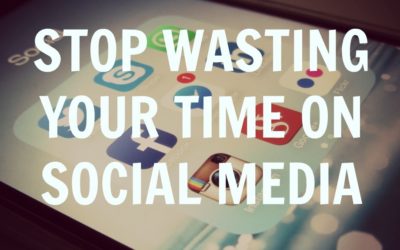Before the COVID-19 pandemic came and disrupted our lifestyles, routines and almost all facets of living, all businesses had a fairly reliable formula to determine the best days, methods and times for marketing their content and brands on social media.
However, with more and more people working remotely from home and looking for virtual connections online, marketers now need to be a lot more fluid with how they set their social media marketing strategies.
COVID-19 took us by surprise last year. However, marketers have now had a chance to settle into the trends it has created. To begin with, the pandemic has taught organizations the importance of taking a more empathetic and humble tone. Social media usage rates have gone up during the pandemic, as 10.5 percent more people were using social media in July 2020 in comparison to the stats for the same period in 2019. Twitter benefited the most from these rising trends, as it saw a 23 percent increase in the number of daily users that frequented the social media site in 2020, in comparison to the slow figures of 2019.
These rising social media usage patterns present an opportunity for businesses across the globe to reassess their social media marketing strategies and meet the consumers where they are. In this post, we delve deep into the characteristics of social media usage in the current pandemic-stricken and the post-pandemic world and further look at social media trends that hold true here.
Changing Posting Times
Marketing agencies and departments have had a stringent eye on social media engagement and usage patterns during the coronavirus pandemic to catch any changes in the best time to post on all social media platforms. The findings generated through this analysis vary from platform to platform and aren’t the same for everyone. Many companies have reported a weekly update mechanism, which helps them track changes over time.
Sprout Social has conducted research in this regard as well and has come up with a detailed schedule of timings that organizations should and will follow during and after the pandemic. The findings are different for each platform.
The best time for posting brand-related material on Facebook before the pandemic was between 1 to 2 pm on Wednesdays. This was when most people would engage with brands. However, the lockdown and the lifestyle that has spurred as a result of it have changed these timings.
Facebook engagement levels have improved and the best days to post currently include Monday, Wednesday and Friday. Brands can now benefit from posting a little earlier in the day between 10 to 11 a.m. Posts made during this time period have higher engagement levels than posts made after 5 in the evening.
The best time for posting brand-related material on Instagram before the pandemic was between 10 to 11 am on Fridays. This was when most people would engage with brands. However, the lockdown and the lifestyle changes brought about by the pandemic have changed these timings.
Instagram engagement levels have improved during the pandemic and the best days to post currently include Monday, Tuesday and Friday.
The best time for posting brand-related material on Twitter before the pandemic was 9 am on Fridays. This was when most people would engage with brands on the social media platform. However, the lockdown and the lifestyle that has resulted because of the pandemic have changed these timings.
Currently, Twitter generates peak activity levels after 9 a.m. on Fridays. Overall, the user and brand engagement levels have remained the same on Twitter with efficient exchange of information between all concerned parties.
Moving Toward Creative Entertainment
In addition to the sole changes in posting and engagement times, COVID-19 has also affected the type of content posted on social media platforms during the pandemic. Users aren’t likely to engage with all types of content anymore and are really particular about the content they react and respond to now.
The rise in TikTok, meme generation, visual comic aids and other entertaining stuff of the nature has meant that people online are relying on the virtual world to fulfill their cravings for fun and entertainment. Even in the post-pandemic world, these trends are expected to reign supreme, considering that the general public will have a greater inclination toward entertaining and fun content.
You can increase the creativity and fun factor of the content you produce for your social media to add some fun to it as well. The fact of the matter is that people currently require entertainment more than anything else, and if you’re able to provide that in the virtual world, they will most definitely follow and interact with you.
Reliance on Organic Material
With companies of all sizes looking for ways to cut on their advertising budgets or reduce the cost they put into their marketing funds, there has been an increase in the reliance on organic, user-generated content post the pandemic.
This is a good time for marketing teams to seriously consider the opportunities in organic marketing materials. Businesses can encourage the generation of user-generated content by:
- Understanding the type of content your followers are really sharing on different platforms. This gives you leverage to understand how to focus on your own efforts and improve them.
- Providing all supporters with an accessible message that unifies you with them and creates a much needed sense of community on social media. Communities are the call of the hour currently, and if you’re able to form them online, you can take your ambitions forward.
- Incentivizing your supporters through social media giveaways, partnerships and games. These interactive methods can help build community standards and allow you to interact with your audience in a different manner.
- Leveraging the power of livestreaming and virtual events shown live to audiences.
- Interacting with posts by happy and satisfied customers to show them your gratitude for being a part of your drive forward.
Social Media Trends in the Post-Pandemic World
While the world is still somewhat rallying from the impact of COVID-19, we are finally at a stage of recovery and progress. The rapid changes that have occurred around us during the pandemic really put behavioral experts and marketers in a spot of bother. Marketers have a stringent eye on social media strategies and digital campaigns to ensure optimal efficiency for a lasting duration.
If you want to know the best social media trends for the post-pandemic world, then we have the right trends mentioned for you in this section.
Live Stream Is the Way Forward
The global pandemic in 2020 saw many businesses take the digital route. Almost all measures to digitalize operations were suddenly imposed on businesses, as governments across the globe incorporated measures that would stop organizations from operating in the manner they did previously.
Naturally, with advancements in livestreaming features on social media, and the lockdown measures imposed by government, businesses showed an interest in online livestreams to announce updates and share information. These livestreams will stick in the post-pandemic world as well, as businesses have recognized the potential of livestreams and just how they can make operations and marketing online easier.
Stories for Content Sharing
As it has been highlighted innumerable times in our blogs, around 500 million users online interact with Instagram stories every day. So, although Instagram stories aren’t the dominant content format in the social media market yet, this is bound to change in the post-pandemic world. Brands will approach stories as content that requires inclusion in their publishing calendars.
Prioritizing stories and including them in detailed social media marketing strategies will help improve results as consumers love watching and sifting through them.
Virtual Reality on Social Media
With the social distancing requirements and the stay-at-home orders given by many global states, people today are looking for more meaningful and detailed interactions in the online virtual world. Virtual reality is bound to pop up as one technological trend that can give people the kind of interaction they require.
Interacting with people through VR does sound fulfilling and can give all individuals involved the kind of human connection they require during these testing times. With the popularity of virtual technology hidden from none, marketers will further their push for VR integration on social media in the post-pandemic world as well.
Augmented Reality on Social Media
Similar to the concept and technicalities behind Virtual Reality, many online marketers and event managers have also taken up the idea of Augmented Reality as a media trend. The adoption of Augmented Reality, or AR, doesn’t require any additional hardware accessories besides a smartphone, which most users already carry.
AR is familiar to people based on the dynamic photo filters used by snapchat and other social media websites. All experiences achieved through augmented reality are interactive and are meant to engage your audience for longer periods. These filters are also fun to play with and meet the greater ambition of providing fun content to users.
Social Commerce Will Grow Further
With the adoption of more features and tools online, we’re seeing a constant increase in the tools and features used online to support an easy and quick shopping experience. Marketers can now set up shop on Facebook to sell their products and reach a more socially savvy audience.
Almost 54 percent of all active social media users use social media to research new products before making the final purchase decision. Through an increased focus on social commerce, businesses can leverage this interest and sell what the users want without being overly invasive.
Campaigns Driven by Purpose
While social media platforms have always driven engagement for causes, the global pandemic has made these platforms shine even brighter with the spotlight of social causes. People with resources are willing to help more than ever, and brands can pitch in to show their humane side to everyone.
Almost 74 percent of all respondents in a Twitter survey wanted brands to increase their acts of kindness, while 77 percent believed that they think a lot more positively about brands that support affected people during times of such crises. The post-pandemic world will see a continuation of this trend with brands stepping up to help where they can.
More Inclusivity Will Matter
Brands are put under a lot of pressure today to not only increase inclusivity within their organization, but to also make meaningful strides in how they manage their marketing campaigns. Audiences are extremely sensitive toward matters of inclusivity and only put their money behind organizations that are passionate about inclusivity and don’t take the subject matter lightly. Almost one-third of all individuals in a recent survey felt that they would switch to an organization or brand that appears more inclusive than others.
Authenticity and Transparency Will Be Paramount
Consumers desperately want brands to get real and drop whatever marketing shroud they had worn to date. This means being authentic and transparent at all times with the products they sell and the operations that go on behind closed doors.
Brands that want consumers to trust them should be honest with them at all times. The best way to do this is through your social media. As per research in 2020 by Sprout Social, transparency and engagement with all customers are the two factors that make a brand’s social media standard stand out among all users.
Anticipating social media trends can help brands build a stronger foundation for the future. It also helps alert them on what to expect in the future, and how to go about marketing online with a focused approach in 2021.








0 Comments